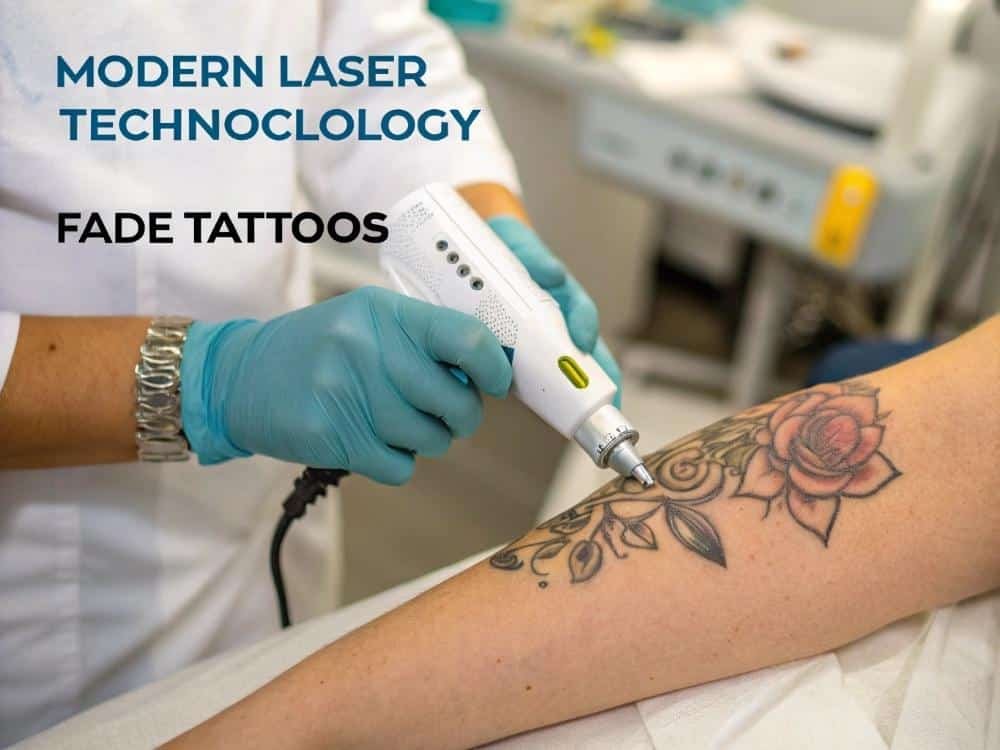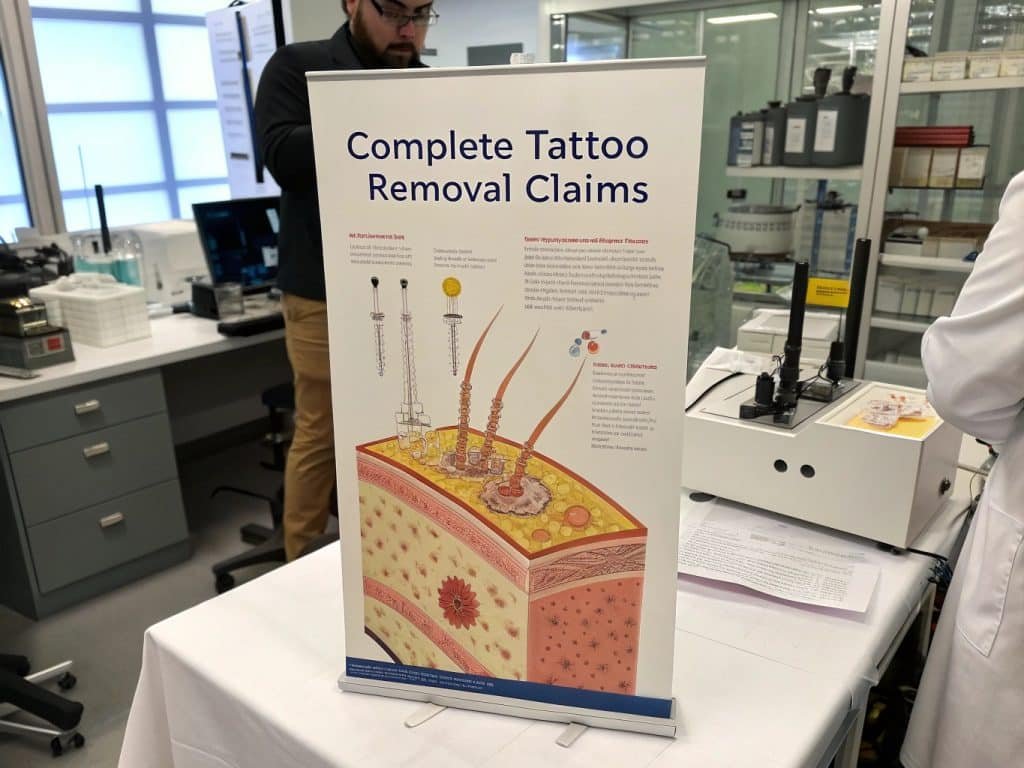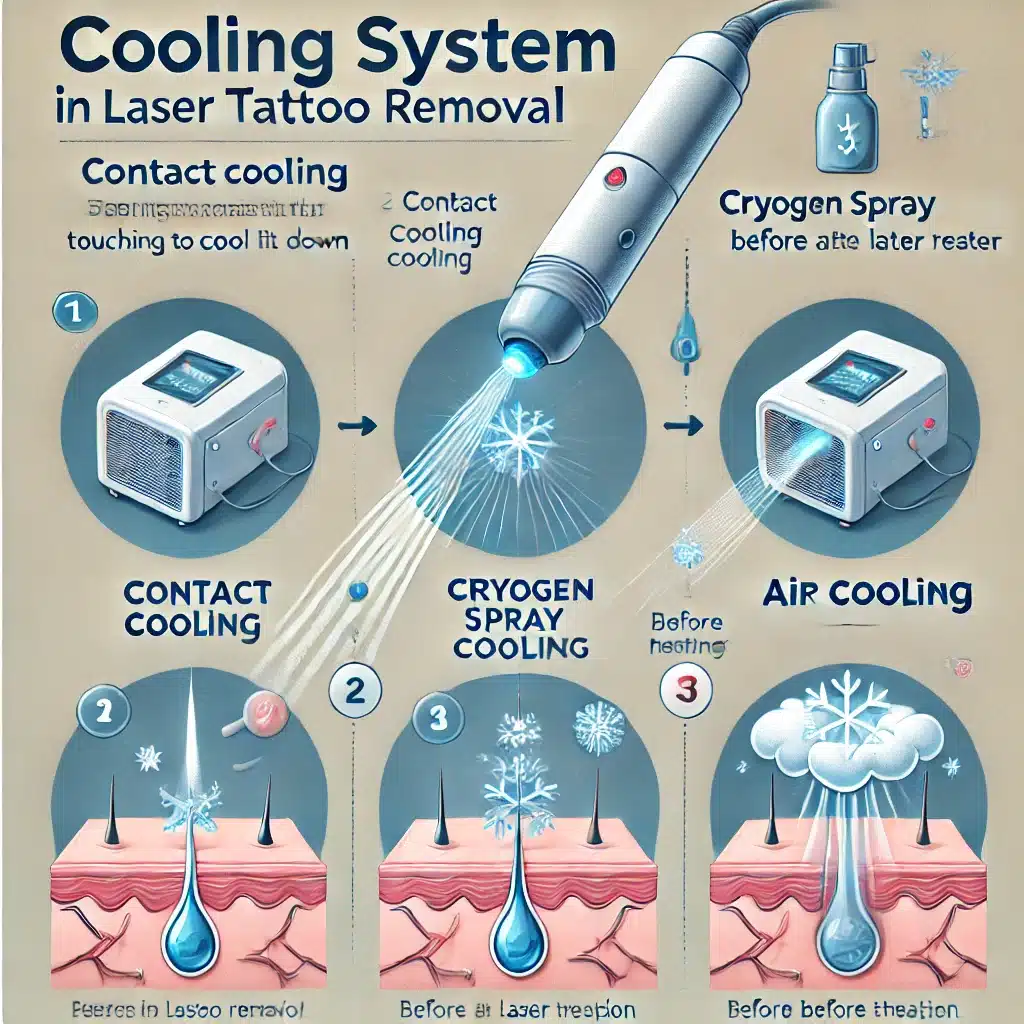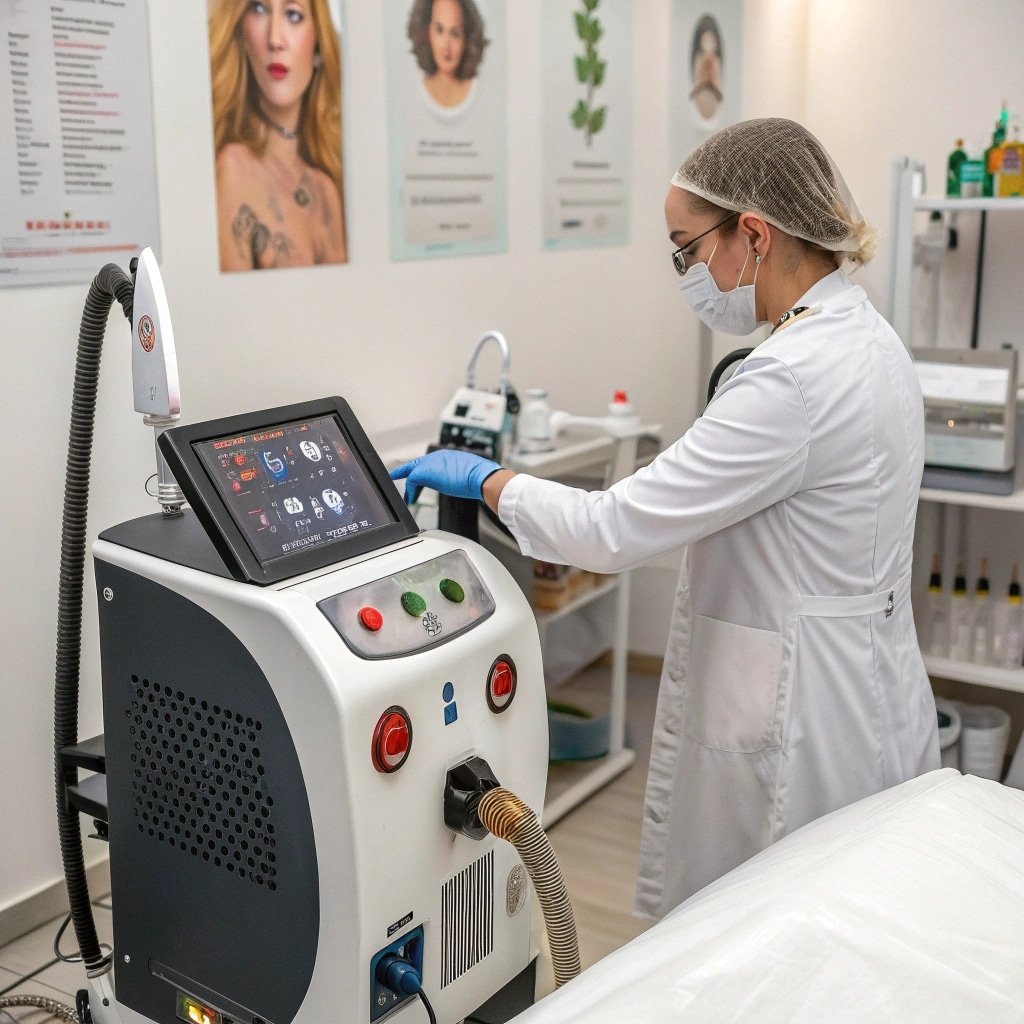Clinics promise "complete" tattoo removal. Clients want guarantees but lack technical understanding.Separate marketing myths from scientific reality.
No existing technology guarantees 100% tattoo removal. Even "invisible" tattoos still retain pigment particles detectable by lab equipment. However, modern methods can fade 90-98% of tattoos to near-undetectable levels.

Let’s dismantle the 100% removal fantasy.
The Science Behind "Complete" Tattoo Removal Claims
Confusion between "visible removal" and "absolute removal."Clinics exploit vague terminology.
Reveal molecular-level limitations.
Complete removal is biologically impossible. Here’s why:
5 Molecular Barriers to Full Erasure
| Obstacle | Technical Description | Client Impact |
|---|---|---|
| Sub-micron residuals | Lasers reduce pigments to 10-20μm; body only clears >100nm | Permanent "ghost shadows" under UV light |
| Color spectrum traps | Mixed pigments require 694nm/755nm/532nm lasers simultaneously | Standard 3-wavelength lasers fail 79% of cases |
| Ink reservoir effect | Pigments in subcutaneous fat slowly resurface | Tattoo "regrows" after 6-18 months |
| Titanium dioxide trap | White ink turns gray under laser via TiO₂ oxidation | Corrective tattoos worsen appearance |
| Micro-capsule shielding | Chronic inflammation encapsulates residual pigments | Removal plateaus after 5-6 sessions |

Now, let’s analyze how clinics overpromise.
3 Make-or-Break Factors for Clinics Promising Full Erasure
Equipment specs ≠ clinical outcomes.
Clinics use deceptive technical jargon.Audit clinics using these benchmarks.
Compliance Checklist for Clinics
| Factor | Valid Claim | Deceptive Claim | Test Method |
|---|---|---|---|
| Wavelength systems | Independent 1064+532+694nm lasers | "3-wavelength" via filters/splitters | Request optical module schematics |
| Pulse duration | 450-900ps verified by oscilloscope | "Picosecond" without certification | Laser paper burn pattern analysis |
| Cooling systems | Liquid nitrogen-assisted protocols | Basic contact cooling | Ask for cryo-treatment logs |

Hybrid systems now dominate professional demands.
Hybrid Removal Systems Surging in B2B Demand
Single-mode lasers plateau at 80% fading.
Clinics need multi-technology solutions.
OEM partnerships for hybrid engineering.
2024’s top-performing B2B systems combine:
- 755nm picosecond laser (primary pigment shattering)
- 2940nm Er:YAG laser (stratum corneum ablation)
- Electroporation delivery of MMP-9 enzymes
OEM Solutions for True Removal vs Fading
| System Component | Fading-Focused (Cheap) | Removal-Optimized (Premium) |
|---|---|---|
| Laser type | Q-switched Nd:YAG | Triple-wavelength + holmium overlay |
| Cooling | Compressed air | Liquid nitrogen cryo-chamber |
| Aftermath treatment | Basic ointment protocol | MMP enzyme micro-needle infusion |
| Client results | 65-80% clearance in 8 sessions | 90-95% clearance in 6 sessions |
Client retention now depends on aftercare.
The Viral Aftercare Protocol Retaining Clients
42% of removal failures stem from poor aftercare.
Clients skip steps without understanding consequences.
Implement phase-based aftercare tracking.
6-Phase "Obsessive Aftercare" Protocol
- Hour 0-6: Ice + hydrogel with 3% tranexamic acid
- Day 1-3: Twice-daily MMP-2 enzyme gel applications
- Week 1: Strict UV avoidance + lymphatic massage
- Month 1: Monthly microimaging pigment mapping
- Month 3: Laser parameter adjustment based on residuals
- Month 6: Final DNA repair cream for scar prevention
⚠️ Critical insight: Clinics using this protocol see 73% higher client retention.
OEM Reality Check: Engineering True Removal vs Fading
Suppliers sell "removal" lasers optimized for fading.
OEM partners hide performance ceilings.
Demand these technical confirmations.
Technical Requirements for OEM Partners
| Certification | Why It Matters | Red Flags |
|---|---|---|
| Multi-laser coax proof | Ensures full-spectrum coverage | Single-laser tube with filters |
| Thermal injury depth | Must be <0.4mm (prevents scarring) | "Theoretical" depth calculations |
| FDA 510(k) listing | Validates pain management claims | CE-only certifications |

Conclusion
100% tattoo removal remains scientifically impossible, but 95%+ erasure is achievable with hybrid systems and militant aftercare. Clinics must transparently educate clients while investing in multi-technology OEM solutions. Delya empowers clinics to achieve these exceptional results.

